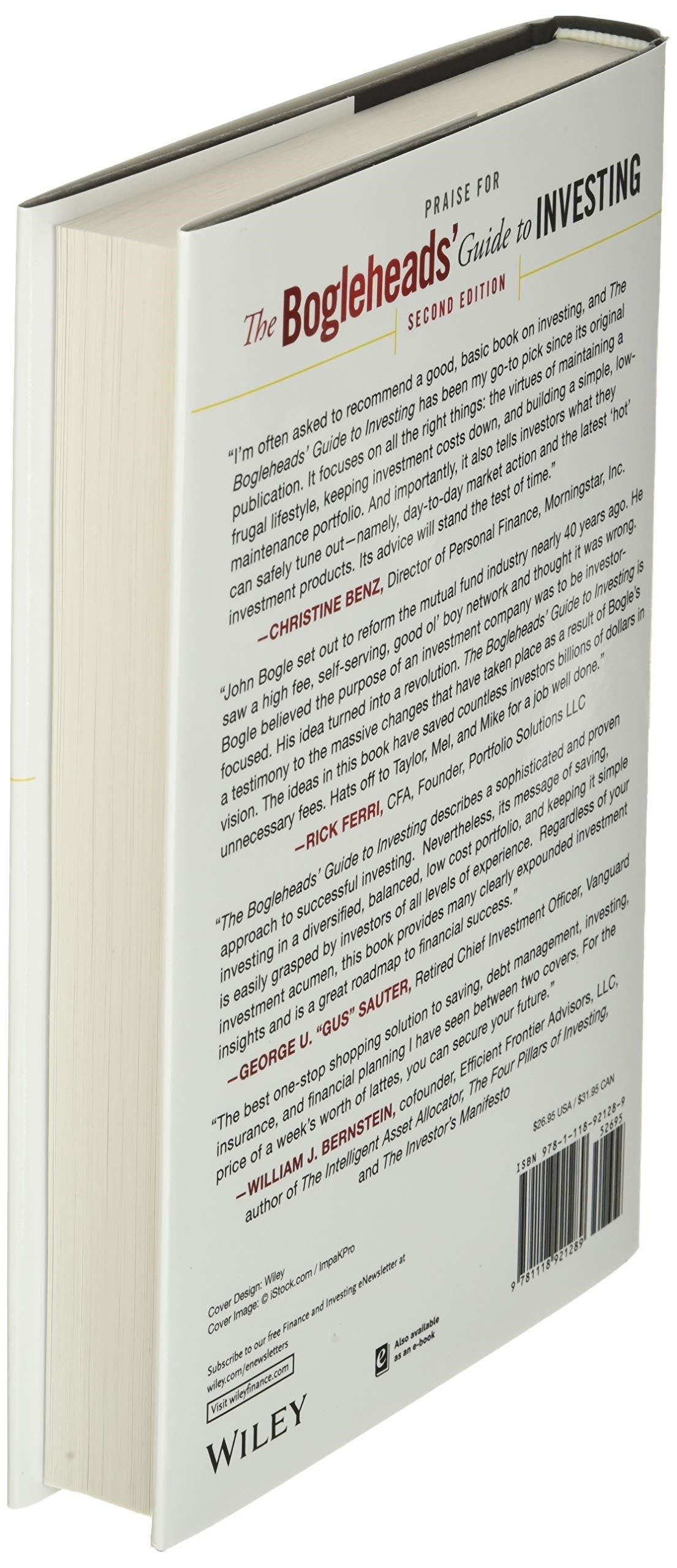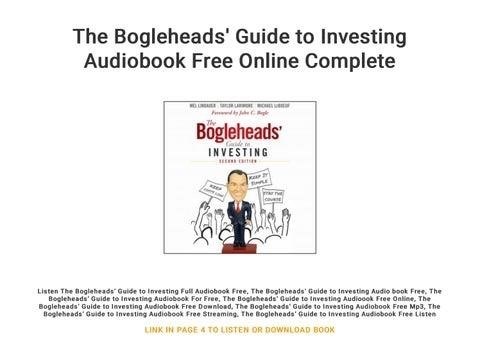The Bogleheads Guide to Investing⁚ A Comprehensive Overview
This guide explores the Bogleheads investment philosophy, emphasizing low-cost index funds, passive management, and long-term wealth building. It details portfolio diversification, risk tolerance assessment, and tax-efficient strategies for achieving financial success.
Understanding the Bogleheads Philosophy
At its core, the Bogleheads philosophy champions a simple, yet powerful approach to investing, deeply rooted in the principles advocated by John C. Bogle, founder of Vanguard. This philosophy prioritizes long-term growth through low-cost, passively managed index funds, rejecting the often-illusory promises of actively managed funds and market timing strategies. The emphasis is on disciplined investing, requiring less time and effort while potentially delivering superior risk-adjusted returns over the long haul. Bogleheads shun the complexities of trying to “beat the market,” instead focusing on consistently investing in diversified, low-cost index funds that mirror the market’s overall performance. This strategy leverages the power of compounding returns, allowing investments to grow steadily over time, minimizing the impact of short-term market fluctuations. A key aspect is understanding your personal risk tolerance and aligning your investment strategy accordingly, recognizing that a long-term perspective significantly mitigates the impact of market volatility. The Bogleheads community actively shares knowledge and experiences to support this approach.
Key Principles of Bogleheads Investing
The Bogleheads’ investment strategy rests on several fundamental pillars. First and foremost is the unwavering commitment to low-cost index funds. By minimizing expenses, investors maximize their returns. This principle directly counters the often-high fees associated with actively managed funds, fees that significantly eat into long-term gains. Second, diversification is paramount. Spreading investments across various asset classes (stocks and bonds, for example) mitigates risk and protects against significant losses in any single sector. Third, passive investing is central. Bogleheads avoid trying to time the market or pick individual stocks, instead opting for a buy-and-hold strategy with broad market index funds. This eliminates the emotional decision-making that often leads to poor investment outcomes. Fourth, long-term perspective is essential. The Bogleheads philosophy encourages a patient, long-term approach, weathering short-term market fluctuations without making impulsive changes. Finally, tax efficiency is considered in portfolio construction, minimizing tax burdens to further enhance investment returns. These principles, when implemented consistently, form the bedrock of a successful Bogleheads investment strategy.
The Role of Index Funds in Bogleheads Investing
Index funds are the cornerstone of the Bogleheads investment approach. These funds passively track a specific market index, such as the S&P 500, providing broad market exposure without the need for individual stock selection. This strategy eliminates the expense and often fruitless effort of attempting to “beat the market,” a goal consistently proven more difficult than many realize. The low expense ratios of index funds are crucial to the Bogleheads methodology, allowing for maximum capital appreciation over time. Unlike actively managed funds, which charge higher fees for professional management and often underperform the market, index funds offer simple, cost-effective access to market returns. By investing in low-cost index funds, Bogleheads aim to capture the overall market growth, rather than trying to predict individual stock performance. This strategy aligns perfectly with the long-term, buy-and-hold approach advocated by the Bogleheads philosophy, allowing for consistent, steady growth over the years.

Practical Application of Bogleheads Principles
This section translates the Bogleheads philosophy into actionable steps, guiding you through portfolio construction, asset allocation tailored to your risk profile, and effective tax management strategies.
Building a Diversified Portfolio
The cornerstone of Bogleheads investing is diversification, mitigating risk by spreading investments across various asset classes. A common approach involves a three-fund portfolio⁚ a total stock market index fund, a total international stock market index fund, and a total bond market index fund. This strategy provides broad market exposure, minimizing the impact of any single asset’s underperformance. The specific allocation within these three funds depends on individual risk tolerance and time horizon. Younger investors with longer time horizons might favor a higher stock allocation, while those closer to retirement often prefer a more conservative approach with a larger bond allocation. The Bogleheads Guide emphasizes the importance of maintaining this allocation over time, resisting the urge to time the market or chase short-term gains. Regular rebalancing, adjusting the portfolio back to the target allocation after market fluctuations, is crucial for maintaining the desired risk level and long-term growth potential. This disciplined approach, combined with low-cost index funds, forms the foundation of a robust and diversified investment strategy aligned with the Bogleheads philosophy.
Asset Allocation Strategies for Different Risk Tolerances
The Bogleheads approach emphasizes tailoring asset allocation to individual risk tolerance and time horizon. Risk tolerance reflects an investor’s comfort level with potential investment losses. Younger investors, with longer time horizons before needing their money, can generally tolerate higher risk and thus allocate a larger portion of their portfolio to stocks, which historically offer higher returns but also greater volatility. Conversely, those nearing retirement or with shorter time horizons often prefer a more conservative approach, reducing stock exposure and increasing the allocation to bonds, which provide stability but typically offer lower returns. A common strategy involves a three-fund portfolio⁚ total stock market, international stock market, and total bond market index funds. The proportions of these funds are adjusted based on risk tolerance. A high-risk tolerance might involve an 80/20 stock-to-bond ratio, while a low-risk tolerance might be 20/80 or even more conservative. The Bogleheads Guide provides guidance on assessing risk tolerance through questionnaires and self-reflection, helping investors determine a suitable asset allocation that aligns with their financial goals and comfort level with market fluctuations. Regular rebalancing ensures the portfolio remains aligned with the chosen risk profile over time.
Tax-Efficient Investing Strategies
The Bogleheads Guide to Investing highlights the importance of tax efficiency in maximizing long-term investment returns. Minimizing taxes allows more of your investment earnings to compound over time, leading to greater wealth accumulation. Tax-efficient strategies often focus on minimizing taxable events, such as capital gains distributions. Investing in tax-advantaged accounts like 401(k)s and IRAs is crucial, as these accounts offer significant tax benefits, shielding investment growth from current taxation. The choice between traditional and Roth accounts depends on individual circumstances and projected tax brackets in retirement. Tax-loss harvesting, a strategy involving selling losing investments to offset capital gains, can reduce tax liabilities. However, care must be taken to avoid triggering the wash-sale rule. Holding investments within tax-advantaged accounts for extended periods can also help reduce tax burdens. The guide emphasizes the use of low-cost index funds held in tax-advantaged accounts as a cornerstone of a tax-efficient investment strategy. By carefully considering tax implications at each stage of the investment process, Bogleheads aim to optimize their returns and preserve more of their hard-earned money.

Resources and Further Reading
To find the Bogleheads Guide to Investing PDF and other resources, explore online booksellers and the Bogleheads.org forum. Additional investment books and articles offer further insights into the Boglehead philosophy.
Finding the Bogleheads Guide to Investing (PDF and other formats)
Securing a copy of “The Bogleheads’ Guide to Investing” in PDF or other formats might require a bit of searching. While it was previously available for free on online archives like the Internet Archive, its current availability may vary. Checking major online booksellers like Amazon remains a reliable option, where you can often purchase the book in various digital formats, including the convenient PDF for easy access on your devices. Remember to always verify the legitimacy of the source before downloading any PDF to avoid potential malware or inaccuracies. The official Bogleheads website, Bogleheads.org, might also list links to reputable sources or provide information on where to legally obtain the book. If you’re a member of the Bogleheads forum, other users might be able to offer suggestions on accessing the PDF version, sharing their experiences in finding the book legally and safely online. Be mindful of copyright laws and support the authors by purchasing the book directly whenever possible; this ensures that you access the most updated and accurate version. Exploring online libraries could also uncover digital copies available for borrowing; many libraries offer e-book access to their members. Consider multiple avenues to increase your chances of finding a legitimate copy.
